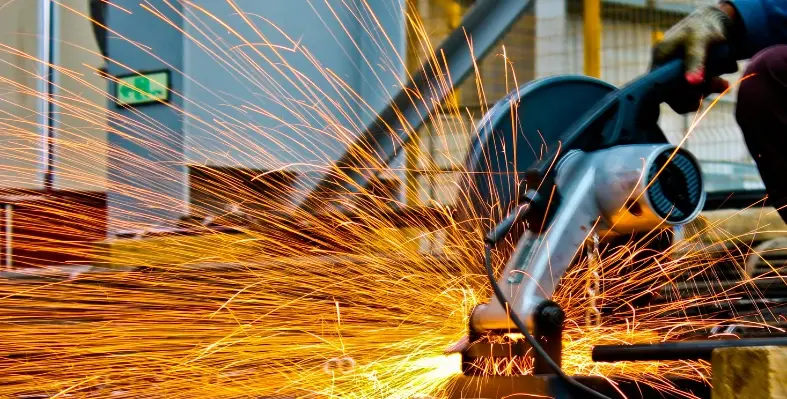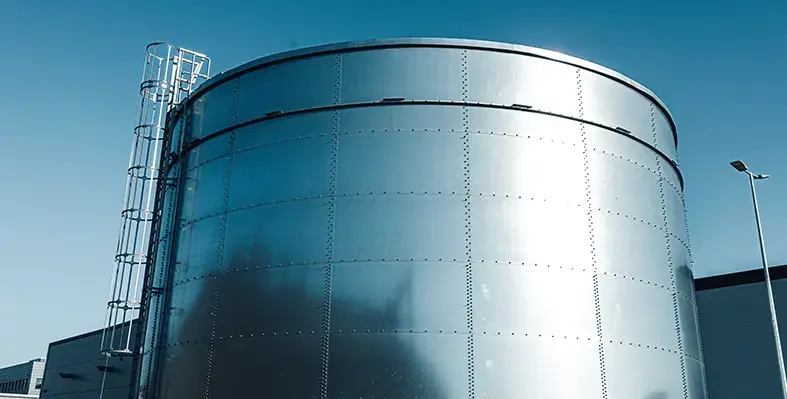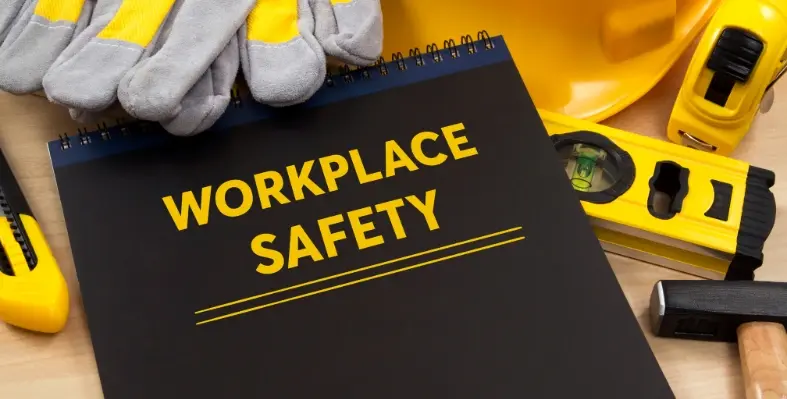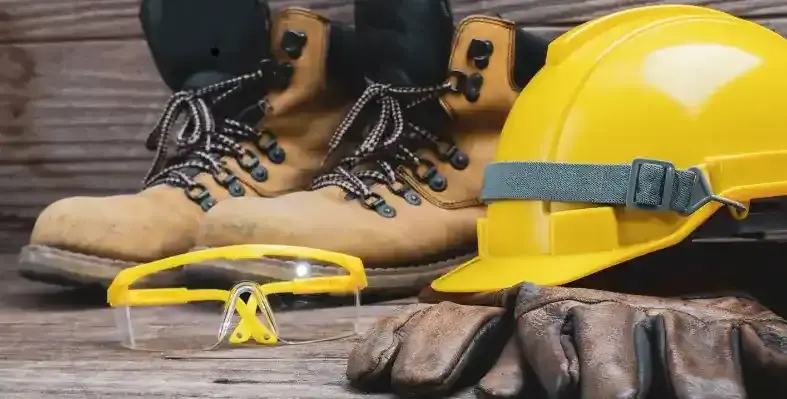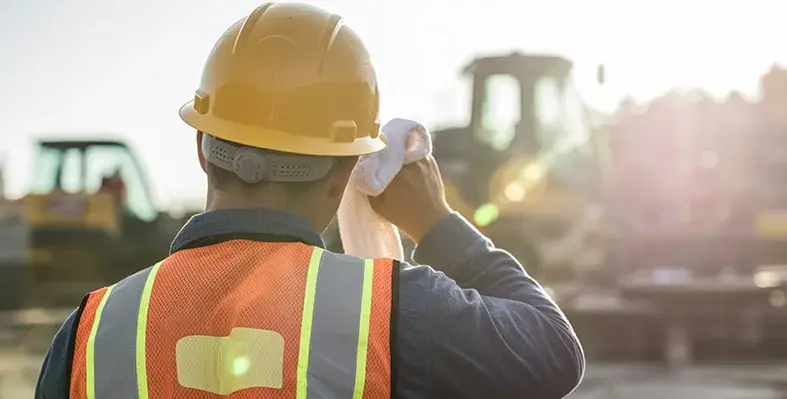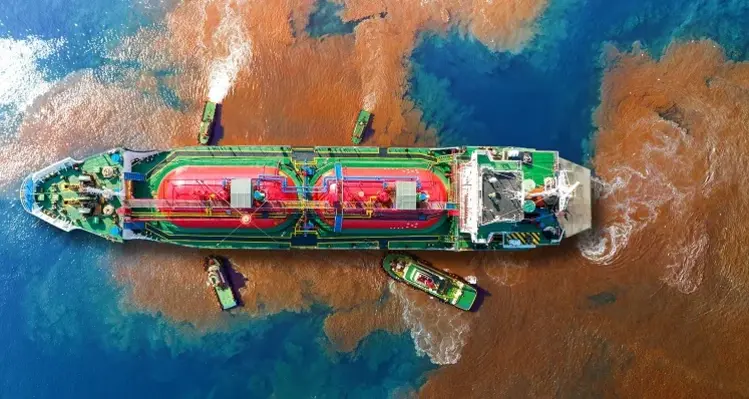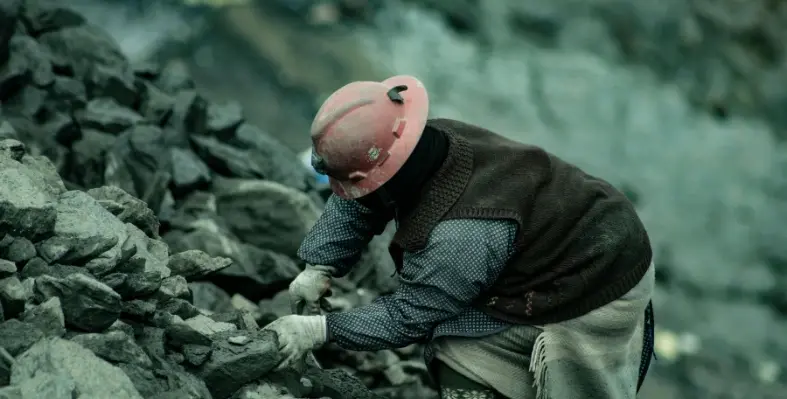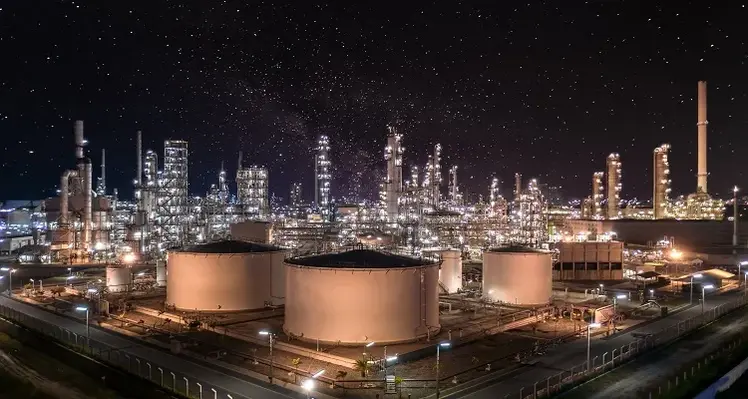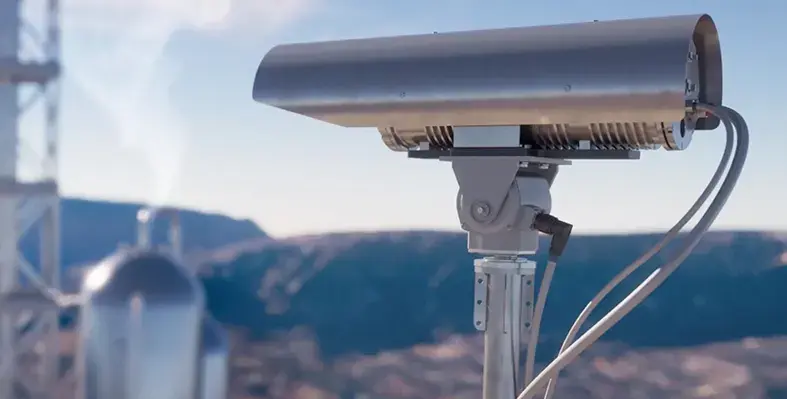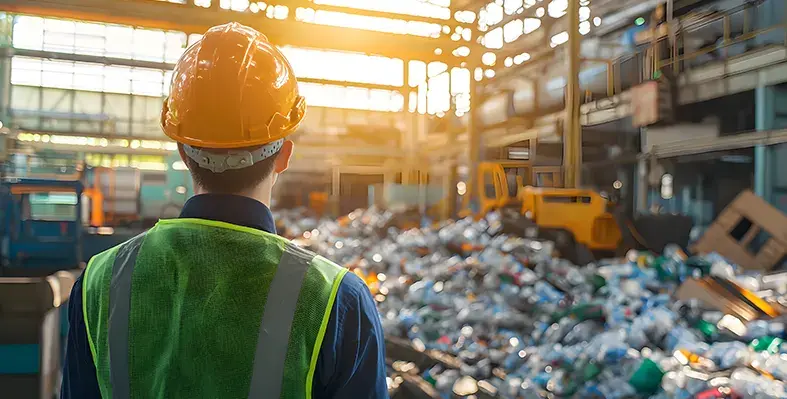North America
North America
The U.S. Department of Labor has unveiled a federal initiative aimed at expanding registered apprenticeship programs in advanced manufacturing, with the goal of enhancing workforce training and promoting safer job performance in high-risk industrial sectors, according to Occupational Health & Safety.
The programme, administered through the department’s Employment and Training Administration, encourages employers to create and expand apprenticeship pathways that prepare workers for skilled manufacturing roles.
These roles often involve operating complex machinery, handling hazardous materials, and performing safety-sensitive tasks, where comprehensive training is critical to preventing workplace injuries and illnesses.
Labor officials said the initiative will prioritise structured, competency-based training combining paid on-the-job learning with classroom instruction. Core elements of these apprenticeship programs include safety fundamentals, hazard recognition, and regulatory awareness, ensuring workers are prepared before undertaking high-risk tasks.
“From an occupational health and safety perspective, expanded apprenticeship opportunities can help reduce workplace incidents by providing employees with consistent, standardised training,” the publication noted.
Manufacturing is considered one of the nation’s more hazardous industries, and safety advocates have long highlighted gaps in training as a key contributor to accidents and near misses.
The department also highlighted that the initiative aims to strengthen the talent pipeline for manufacturers while fostering safer and more resilient workplaces. Employers participating in the program are encouraged to align training with industry standards and evolving safety requirements, ensuring workers remain equipped to meet the demands of modern manufacturing environments.
Officials described the initiative as part of a broader strategy to invest in workforce development while reinforcing protections for employees entering demanding industrial settings. By combining skills development with safety-focused education, the program is expected to support both operational efficiency and a culture of workplace safety across the manufacturing sector.
- Topic: Industrial
- Region: North America
- Date: 19 November 2025
- Year: 2025
Sherwin-Williams Protective & Marine has won two energy industry awards for its next-generation industrial thermal insulative system Heat-Flex Advanced Energy Barrier (AEB), which not only offers excellent thermal efficiency but also eliminates costly and dangerous corrosion under insulation (CUI)
They include a 2025 Gulf Energy Information Excellence Award for Best Coating/Corrosion Advancement Technology and a 2025 Vaaler Award from Chemical Processing. The Gulf Energy Information Excellence Awards recognise the energy industry’s leading innovations and thought leaders, while the Vaaler Awards, established more than 50 years ago by Chemical Processing, recognise products and services that dramatically improve the operations and economics of chemical processing plants.
Heat-Flex AEB works by building a thick film of highly insulative material on to assets required to maintain operating temperatures up to 350°F (177°C), with excursions to 400°F (204°C). The thermal insulative system retains process heat inside the applied assets, allowing them to continue operating even in extreme environments. It also reduces burn risk for employees working in close proximity to hot assets.
The thermal insulative system rivals the in-service thermal performance of traditional mineral-based insulation systems, due to their tendency to absorb and trap moisture that infiltrates their exterior cladding. This moisture dramatically reduces the insulating capacity of the insulation and contributes to the acceleration of CUI. Heat-Flex AEB maintains thermal consistency and will remain at that same level of insulating capacity throughout its service life.
“We engineered Heat-Flex AEB to replace the bulky mineral-based insulation that’s traditionally used on storage tanks, process vessels, valves, fittings and piping to retain process heat,” said Neil Wilds, global product director, CUI/Testing, Sherwin-Williams Protective & Marine.
“This replacement thereby removes the corrosion zone between traditional insulation and the substrate, eliminating the potential for CUI to form by default. Winning two big industry awards for the technology is a testament to the system’s ability to reduce costs associated with corrosion, improve carbon footprints and enhance efficiencies for operators in the energy industry.”
Traci Purdum, editor-in-chief of Chemical Processing said Sherwin Williams’ Heat-Flex AEB thermal insulative system “represents the kind of breakthrough thinking that not only solves today’s operational challenges but also sets new standards for safety, efficiency and sustainability in chemical processing.”
- Date: 12 November, 2025
- Year: 2025
The Voluntary Protection Programs Participants’ Association (VPPPA) has announced the renewal of its strategic partnership with Clear Audit Management (CAM), a digital audit platform that helps current and prospective VPP sites enhance, standardise, and modernise processes related to OSHA’s Voluntary Protection Program.
Through this partnership, VPPPA members will gain access to exclusive resources, insights, and special offers designed to support their safety and compliance goals, including discounted access to the CAM platform.
By utilising CAM’s audit management system, members can streamline internal safety audits, identify potential hazards more efficiently, and drive continuous improvement across both VPP and non-VPP sites.
“This renewal represents momentum,” said Kristen Denney, director of strategy at Clear Audit Management. “We’ve built a strong foundation, and now we’re ready to increase our impact through our technology that streamlines compliance and promotes continuous improvement for active VPP sites, those preparing to apply to the programme, and supporting sites through their Journey Towards Safety Excellence.”
“This partnership renewal between VPPPA and Clear Audit Management reaffirms the shared vision of advancing health and safety excellence through making the audit process—a critical component of continuous improvement—more efficient for both sites and auditors alike,” said Chris Williams, VPPPA executive director. “This allows us to continue our mission to raise the standard for workplace safety and health excellence across the country.”
- Date: 8 October, 2025
- Year: 2025
Ergodyne has unveiled its latest winter work gear collection, designed to help workers stay safe and comfortable in extreme cold and harsh weather conditions.
The launch comes as the National Oceanic and Atmospheric Administration (NOAA) forecasts a volatile 2025-26 winter, with colder-than-normal temperatures expected across the northern Rockies and Plains, and wetter-than-average conditions across northern U.S. regions. The emerging La Niña pattern is anticipated to bring snow, frozen precipitation, and bursts of extreme cold, making proper winter gear essential for outdoor workers.
At the heart of the collection is the 6981 Winter Warming Kit, which equips workers with essential items for the season’s harshest conditions.
Highlights include the 6801 Winter Skull Cap with Rechargeable LED Light, a thermal beanie that keeps workers warm while providing built-in lighting for dark winter workdays; the 6808ZI Winter Bump Cap Beanie, a dual-function thermal beanie with a removable bump cap insert that offers both warmth and protection against minor impacts; and the 6831 Reflective Balaclava, a versatile 3-in-1 face, head, and neck covering with reflective detailing to enhance visibility in low-light or whiteout conditions.
Together, these products demonstrate Ergodyne’s commitment to equipping workers with reliable, durable gear that allows them to prepare for and respond effectively to winter hazards, ensuring both safety and productivity in challenging environments.
“We know that preparation is everything during the winter,” said Ergodyne product manager Claudia Weber. “These additions are all about helping crews stay safe, visible and warm no matter what the forecast delivers.”
“That’s never been lost on us,” said Ergodyne president Greg Schrab. “A great example are the gloves in our Winter Warming Kit (ProFlex 7401 Winter Work Gloves). Of course they’re warm but read the reviews and they’re all talking about how flexible and grippy they are. That’s not an accident. Anybody who’s ever spent a minute working outdoors in the cold knows how hard it can be to get a handle on even the most basic tasks, and that was the puzzle the team set out to solve when we were designing them. Warm isn’t enough for any of our winter gear.”
- Date: 6 October, 2025
- Year: 2025
The US Senate has confirmed David Keeling as the new head of the Occupational Safety and Health Administration (OSHA), according to multiple news sources.
On 3 October, senators passed S. Res 412 with a 51-46 vote. The resolution included over 100 nominations, among them Wayne Palmer as head of the Mine Safety and Health Administration.
Keeling, previously a safety executive at UPS and Amazon, had been awaiting Senate approval since the Health, Education, Labour and Pensions Committee endorsed his nomination in a 12-11 party-line vote on 26 June.
During his June confirmation hearing before the Senate HELP Committee, Keeling outlined three primary objectives for OSHA.
Modernisation of regulatory oversight and rulemaking
Keeling emphasised leveraging technology and predictive analytics to shift from “mere regulatory compliance and post-injury response to injury prevention and informed design.”
He advocated adopting global industry consensus standards, which he described as undergoing “more rigorous review, regular updating, and continuous improvement” than many of OSHA’s current rules. Neither his testimony nor written statements specified which standards would be prioritised.
Enhancing OSHA’s collaboration efforts
Keeling highlighted the importance of cooperation with professional organisations, businesses, and trade unions. “We all share the same goal,” he noted, “though we may differ on the best path to achieve it. We must break down existing silos and self-imposed barriers to drive meaningful progress.”
Updating voluntary protection programmes
Keeling proposed modernising OSHA’s Voluntary Protection Programmes (VPP). “The current VPP framework is a foundation, but only a starting point. Significant work is needed to deliver successful outcomes,” he said.
Keeling’s confirmation marks a significant step for OSHA as it seeks to modernise and strengthen workplace safety initiatives.
- Date: 6 October, 2025
- Year: 2025
As climate change intensifies summer swelters, a new study reveals a stark reality for American workers: extreme heat is not just uncomfortable, it is a hidden catalyst for on-the-job accidents.
Published this year in Environmental Health, researchers estimate that high temperatures contributed to over 1% of all workplace injuries reported in 2023, underscoring the urgent need for nationwide protections.
The study, led by epidemiologist Barrak Alahmad of the University of Kansas Medical Center and colleagues, scrutinised more than 500,000 injury reports submitted to the Occupational Safety and Health Administration (OSHA) via its Injury Tracking Application.
Focusing on large employers (100+ employees) in high-risk sectors like construction, manufacturing, and agriculture, the team geocoded each incident to match it with precise weather data from the injury date
Using a sophisticated case-crossover analysis, scientists compared heat index on injury days against cooler control days for the same workers.
The verdict? Heat doesn't just raise tempers; it elevates risks non-linearly. Odds of injury ticked up modestly around 85°F but spiked dramatically above 90°F. At 100°F, workers faced 10% higher odds (odds ratio [OR] 1.10, 95% CI: 1.07-1.13) compared to 80°F baseline.
By 110°F or hotter, that risk ballooned 20% overall (OR 1.20, 95% CI: 1.13-1.26). These patterns are held across industries, even indoors where air conditioning falters or does not exist.
"Exposure to heat leads to physiological and cognitive impairments that increase the risk of workplace injuries," the authors note in their abstract, pointing to heat's toll on alertness, reaction times, and decision-making.
The findings hit hardest in vulnerable spots. In states lacking OSHA-approved heat standards like Texas and Florida, the injury odds at 110°F+ jumped 22% (OR 1.22).
In contrast, states with rules, such as California's pioneering heat illness prevention mandate, saw a milder 9% uptick (OR 1.09), though statistical overlap tempers firm claims of causality.
Construction workers bore the brunt, with heat-attributable injuries clustering in sun-baked Southern states during peak summer months.
Extrapolating nationally, the study pins 1.18% (95% CI: 0.92%-1.45%) of 2023's reported injuries (roughly 5,800 cases) on heat.
That is a conservative tally, as it excludes smaller firms and unreported incidents.
Economic cost
Billions in lost productivity, medical bills, and workers' comp claims, experts say.
This comes amid escalating climate threats. The US endured its hottest summer on record in 2023, with heat waves claiming lives and livelihoods.
Yet federal heat safeguards lag; OSHA's proposed rule, announced in July 2024, remains mired in rulemaking.
Alahmad's team calls for swift action: mandatory water breaks, shaded rest areas, and acclimatisation training.
"These estimates contribute to the calculation of the benefits of standards, policies, and programs that reduce workplace exposure," they write, urging policymakers to quantify heat's human cost.
Labour advocates applaud the research. "It's a wake-up call," said Sara Gonzales of the AFL-CIO. "Workers aren't expendable in the heat."
- Topic: ESG
- Region: North America
- Date: 17 September 2025
- Year: 2025
To mark the USA’s National Preparedness Month, held in September every year to raise awareness about the importance of preparing for disasters and emergencies, the Bureau of Safety and Environmental Enforcement (BSEE) has highlighted the work of its Oil Spill Preparedness Division (OSPD)
The OPSD safeguards America's offshore energy infrastructure while protecting coastal waters and marine environments from the devastating impacts of oil spills. BSEE works closely with federal agencies, state partners, industry, and environmental organisations to ensure a unified national response framework to safeguard people, the environment, and the economy.
Three pillars of protection
BSEE implements its preparedness program through three interdependent roles which together form a comprehensive defense system:
1. Preparedness Verification – reviewing and approving spill response plans, and ensuring operators maintain the people, equipment, and processes to carry them out.
2. Oil Spill Response Research – advancing technologies and tactics to meet evolving offshore energy risks.
3. Ohmsett Testing and Training Facility –a wave and test tank for oil spill research, training, and equipment evaluation.
BSEE conducts rigorous training programs and equipment inspections, as well as Government-Initiated Unannounced Exercises (GIUEs), which require offshore operators to stop what they're doing and shift immediately into crisis mode, deploying personnel, equipment, and processes to tackle a hypothetical spill. These exercises are run in partnership with the U.S. Coast Guard, the Pipeline and Hazardous Materials Safety Administration (PHMSA), and state governments, helping BSEE to identify gaps in order to be fully prepared for a real incident.
Spill risks and technical challenges are evolving as US energy development pushes into new environments, such as the Arctic, the Atlantic, and higher-pressure formations, as well as new offshore renewables like wind and wave energy. BSEE invests in research and development which takes into account
into these evolving areas.
Eric Miller, deputy assistant director for OSPD, explains, "The technologies and data produced from robust government R&D inform regulatory updates, improve contingency plans, enhance response tools, and support safe and environmentally sustainable operations." This R&D not only reduces spill impacts but also spurs innovation, lowers risks for private research, and strengthens the broader energy economy.
Through constant planning, training, testing, and research, the division ensures that America's offshore energy sector is not only compliant but also capable.
Miller says, "It's vital for industry and the government to be ready to respond to an oil spill immediately. That's how we keep ecosystems healthy, communities strong and energy production stable."
- Date: 10 September, 2025
- Year: 2025
The National Institute for Occupational Safety and Health (NIOSH) is offering free and confidential black lung disease screenings throughout September at multiple locations in Ohio and West Virginia.
Six new sites have been added this month, including Ohio University in Zanesville on 15 September, the UMWA Wheeling Office in Wheeling on 16 September, the Municipal Building in Woodsfield on 17 September, the Volunteer Fire Department in Hopedale on 18 September, Bass Pro Shop in Triadelphia on 19 September, and Price Cutter in Mannington on 23 September.
All current and former coal miners, whether working underground, on the surface, or under contract, are encouraged to participate.
The screenings provide early detection of black lung disease, a preventable yet serious respiratory condition caused by inhaling coal mine dust.
Each screening takes roughly 30 minutes and includes a work history and respiratory questionnaire, chest X-ray, blood pressure check, and breathing test.
Participants will receive a confidential report of their results within eight to ten weeks.
While walk-ins are welcome, appointments are recommended to ensure timely service.
These mobile screenings reinforce NIOSH’s commitment to preventing work-related illnesses and promoting better occupational health outcomes:
-
Zanesville, OH – Ohio University, Zanesville (15 September, 9 AM–4:30 PM)
-
Wheeling, WV – UMWA Wheeling Office (16 September, 9 AM–5:30 PM)
-
Woodsfield, OH – Municipal Building (17 September, 9 AM–4:30 PM)
-
Hopedale, OH – Volunteer Fire Department (18 September, 8 AM–3:30 PM)
-
Triadelphia, WV – Bass Pro Shop (19 September, 8 AM–5 PM)
-
Mannington, WV – Price Cutter (23 September, 8 AM–3:30 PM)
- Topic: Industrial
- Region: North America
- Date: 8 September 2025
- Year: 2025
Blackline Safety’s EXO 8 portable area monitor has won seven awards this year, making it one of the most recognised health and safety innovations in the industry
The EXO 8 with gamma detection is a next-generation connected area monitor that advances gas detection and early hazard identification for companies and emergency responders. It launched in September 2024 and combines gas and gamma detection in a single connected unit — a capability that’s critical in high-hazard sectors such as oil and gas, mining, decommissioning, emergency response, and even public safety.
Most recently, the product was recognised in the 2025 Occupational Health & Safety New Product of the Year Awards in the categories of Emergency Response & Preparedness and Industrial Hygiene: Gas Monitors/Instrumentation. These Awards, now in their 15th year, celebrate the most impactful innovations in workplace safety. The program highlights manufacturers whose products demonstrate exceptional advancements in design and functionality, with a proven ability to enhance worker protection and overall safety outcomes.
Other awards this year include the internationally renowned Red Dot Design Award, the Preventica Paris Innovation Award and three OH&S Industrial Hygiene Awards.
“EXO 8 continues to set the bar for innovation in area monitoring,” said Cody Slater, CEO and chair, Blackline Safety, a global leading in connected safety technology. “Being recognised across multiple award programs underscores the monitor’s real-world impact and validates our mission to ensure that every worker gets home safely, no matter what hazards they face.”
"EXO 8 with gamma detection has an even wider application beyond industrial use,” said Chris Johnson, deputy chief for the Westchester County Department of Emergency Services in New York State. “It allows hazmat teams to use the device for public safety as part of event protection. It will also keep our people more protected because we can detect more gases."
EXO 8 has already been deployed at a high-profile awards show and during a large public gathering for a renowned religious leader, and security teams for global sporting events are also considering it.
- Topic: ESG
- Region: North America
- Date: 5 September 2025
- Year: 2025
SLB’s Methane LiDAR Camera has been approved by the U.S. Environmental Protection Agency (EPA) as an alternative test method (ATM) for methane detection, enabling it to be used as a standalone methane detection solution
This eliminates the need for labour-intensive traditional methods such as Optical Gas Imaging (OGI) surveys.
The SLB Methane LiDAR Camera is an autonomous measurement tool with component-level spatial resolution capabilities that clearly distinguish between fugitive leaks and permitted emissions, without requiring secondary measurements.
“Advanced technology solutions are crucial to address the industry’s emissions of methane — a potent greenhouse gas (GHG) with a near-term warming impact up to 80 times that of CO2,” said Ravi Peddibhotla, emissions business manager, SLB.
“Unlike other EPA-approved technologies, the Methane Lidar Camera's spatial resolution allows it to identify emissions sources precisely, preventing false alarms from permitted methane vents. This will enable our U.S. customers to improve their compliance and more efficiently mitigate fugitive emissions from their operations.”
SLB’s Methane LiDAR Camera operates effectively in diverse conditions. Unlike OGI cameras, it is not affected by the temperature difference between the gas and the surrounding environment — a crucial factor for accurate detection. The camera features built-in laser imaging technology which visualises and quantifies emission rates, duration, location, persistence and timing. Operators can access measurements and images remotely via a digital platform, facilitating efficient management of Leak Detection and Repair (LDAR) activities and reporting.
To date, 100 LiDAR Cameras have been deployed by SLB’s customers across four continents.
According to Momentick’s 2024 Methane Emissions Report, 68% of global methane emissions stem from upstream facilities. However they are relatively easy to tackle. The International Energy Agency (IEA) estimates that over 75% of the methane emissions in the oil and gas sector could be reduced today using existing technologies. There is a high level of commitment in the industry to reducing methane emissions, with more than 50 companies, representing almost 45% of global oil production, signed up to the COP28 Oil & Gas Decarbonization Charter (OGDC) which includes a commitment to reduce methane emissions to near zero by 2030. The majority of signatories are on track to meet its goals, according to a progress report.
- Topic: HSE
- Region: North America
- Date: 4 September 2025
- Year: 2025
Two strategic partnerships with MEJA Construction hope to instil a stronger attitude towards health and safety on two projects in Henry and Clayton counties in Georgia
The construction projects include the demolition of two school gymnasiums and the construction of their replacements, and the construction of a premises encompassing a kitchen & cafeteria, gymnasium, media centre, classrooms and collaboration spaces.
OSHA will lead training around injury prevention and hazard exposure to workers set to take part in the projects, assist contractors in establishing health and safety management systems and conducting inspections, and monitor potential chemical risks.
The Georgia Institute of Technology On-site Safety and Health Consultation will also be involved in the partnership and projects in a stakeholder capacity.
OSHA's Strategic Partnership Program (OSPP) has been estimated to protect two million workers thus far.
- Topic: HSE
- Region: North America
- Date: 27 August 2025
- Year: 2025
The U.S. Department of Labor's Occupational Safety and Health Administration renewed its alliance with the National Waste & Recycling Association and the Solid Waste Association of North America with the aim of improving the safety and health of workers in the solid waste and recycling industry
Over the term of the three-year agreement, OSHA, NWRA and SWANA will focus on safety issues, including transportation hazards such as backovers and distracted driving, slips, trips and falls, as well as needlestick and musculoskeletal injuries. They will also address potential health issues associated with lithium battery hazards in waste and recycling collection and processing.
The participants will collaborate to develop resources such as educational articles, fact sheets, and toolkits aimed at preventing and mitigating hazards and will share information at industry conferences, forums and meetings. Particular attention will be paid small- and medium-sized employers, to ensure that all businesses within the waste and recycling industry have access to essential safety information and resources.
The initiative takes place under OSHA's Alliance Program, whereby the agency develops voluntary, collaborative working relationships with organisations committed to workplace safety and health. They include trade and professional associations, labour unions, educational institutions, community and faith-based groups, and government agencies.
Alliance participants work with OSHA to provide workers and employers with information, guidance, and resources to promote safety and health in workplaces in order to prevent workplace fatalities, injuries and illnesses. Alliances also ensure that workers know their rights and employers understand their responsibilities under the Occupational Safety and Health Act.
